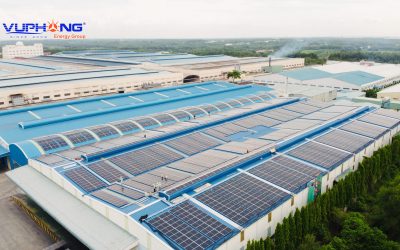
Green finance is gradually becoming a core driver in the journey of green transition and sustainable development. Accessing green finance not only helps reduce capital costs but also creates a long-term competitive advantage, enhancing a company’s resources and market image. As businesses progressively shift towards green operations and tap into green financial resources, they stand to gain significant benefits and secure a solid position in an increasingly competitive market landscape.
The Concept of Green Finance
Green finance encompasses financial instruments and methods aimed at fostering environmental sustainability and facilitating the transition to a low-carbon economy. By channeling funds from financial markets into environmental protection, green finance seeks to connect the green economy with traditional finance. Green financial products are categorized into three main segments: retail finance such as green credit, asset finance like green support and carbon funds, and corporate finance including green investments and green bonds (Soundarrajan & Vivek, 2016). Through market-oriented financial tools like green credit, green finance is essential for driving the economic transition towards greener and more environmentally friendly economic growth. (According to the Journal of Accounting and Finance Research, 2024)
 For businesses/individuals to access and utilize green finance, the nature of the business/project must be green and sustainable
For businesses/individuals to access and utilize green finance, the nature of the business/project must be green and sustainable
Therefore, for a business or individual to access and utilize green finance, the enterprise or project must be inherently green and sustainable. Furthermore, the measurement of the positive impacts of the business/project needs to be transparent and professional, which is critically important if the enterprise aims to access green capital and pioneer the transition journey. Thus, green finance can be seen as both a prerequisite and a driver, as well as a result of businesses implementing ESG practices and gradually shifting towards green and sustainable production and operations.
Benefits of Green Finance for Businesses
Accessing green finance brings numerous practical benefits to businesses. First and foremost, companies can reduce their capital costs through preferential loans with lower interest rates compared to traditional credit. This leads to significant savings in investment costs during the initial phase of a project.
 Green finance incentives in Vietnam from several banks – Updated 2025
Green finance incentives in Vietnam from several banks – Updated 2025
Additionally, using green capital enhances competitiveness when businesses participate in global supply chains, where ESG standards are increasingly becoming mandatory. Beyond internal evaluation criteria, Vietnamese enterprises also face the European Union’s CBAM (Carbon Border Adjustment Mechanism)—a form of border tax levied on the embodied carbon emissions of imported goods.
Green finance also opens up opportunities to access international investment funds such as the IFC, ADB, or the Green Climate Fund. These investors often prioritize businesses with sustainable development strategies and clear, transparent emission reduction roadmaps.
Beyond the financial aspect, the application of green finance encourages businesses to innovate technologically, adopt clean production solutions, and develop renewable energy. Moreover, a sustainable business can build a brand image associated with environmental responsibility and sustainable development, thereby creating a significant advantage in marketing and communications.
Green Finance in Vietnam – Status and Policies
Current Status of Green Finance in Vietnam
In Vietnam, although “green finance” has been mentioned in many national strategies, its implementation is not yet widespread. Green projects are currently concentrated in large corporations or foreign-invested enterprises, while small and medium-sized enterprises have limited access. However, Vietnam continues to receive significant international support, notably the $15.5 billion commitment under the JETP framework, and the “blended finance” model being implemented by the ADB and IFC.
To access these capital sources, businesses need to prepare comprehensive and transparent documentation. Key documents include CCRA (Climate Change Risk Assessment) or TCFD (Task Force on Climate-Related Financial Disclosures) reports, a specific emission reduction roadmap, a transparent MRV (Measurement, Reporting, Verification) dataset, and ESG reports compliant with ISSB standards. These are prerequisites for enterprises to qualify for international funding, rather than relying solely on the domestic banking system.
 To access green capital, businesses need to prepare comprehensive and transparent documentation and reports.
To access green capital, businesses need to prepare comprehensive and transparent documentation and reports.
Policies Related to Green Finance
On the policy front, the government has issued several important documents to promote green finance.
- The Law on Environmental Protection 2020, effective from January 1, 2022, defines 7 types of green finance in Article 149 and 10 types of green bonds in Article 150. This law regulates the activities of banks to be more sustainable and environmentally responsible.
- Decision 21/2025/QĐ-TTg, which stipulates environmental criteria and the certification of projects classified as green, marks a significant step forward.
Decree No. 08/2022/NĐ-CP (Article 154) assigns the Ministry of Natural Resources and Environment to develop environmental criteria for certifying projects eligible for green credit and the issuance of green bonds. Furthermore, national strategies on green growth for the 2021-2030 period, the action plan for implementing the Paris Agreement, and the green banking development scheme issued by the State Bank of Vietnam all contribute to completing the legal framework.
What Businesses Need to Do to Access Green Finance
To capitalize on the opportunities presented by green finance, businesses need to take several crucial steps. First, they must assess their current business operations and identify projects with “greening” potential, such as investing in a rooftop solar power system or upgrading to clean production technologies.
Concurrently, businesses must standardize their legal documents and ESG reports according to international standards to meet the transparency requirements of financial institutions.
Next, selecting the appropriate green financial instrument is essential. Businesses can consider green credit from commercial banks, issuing green bonds, or approaching investment funds. Finally, collaborating with professional consulting partners will help businesses increase their chances of accessing capital and shorten the preparation process.
A Reliable Partner to Help Businesses Access Green Finance

VP Carbon is a member company of Vu Phong Energy Group – a leading clean energy development company in Vietnam. VP Carbon specializes in providing solutions to help businesses effectively reduce greenhouse gas emissions across all three scopes with a clear and transparent roadmap. VP Carbon partners with businesses on their journey towards Net-Zero through services related to emission reduction, renewable energy certificates, carbon credits, and ESG reporting. This enables businesses to undergo a green transition with steady, clear steps, attracting international investors and partners, and delivering a sustainable competitive advantage.









